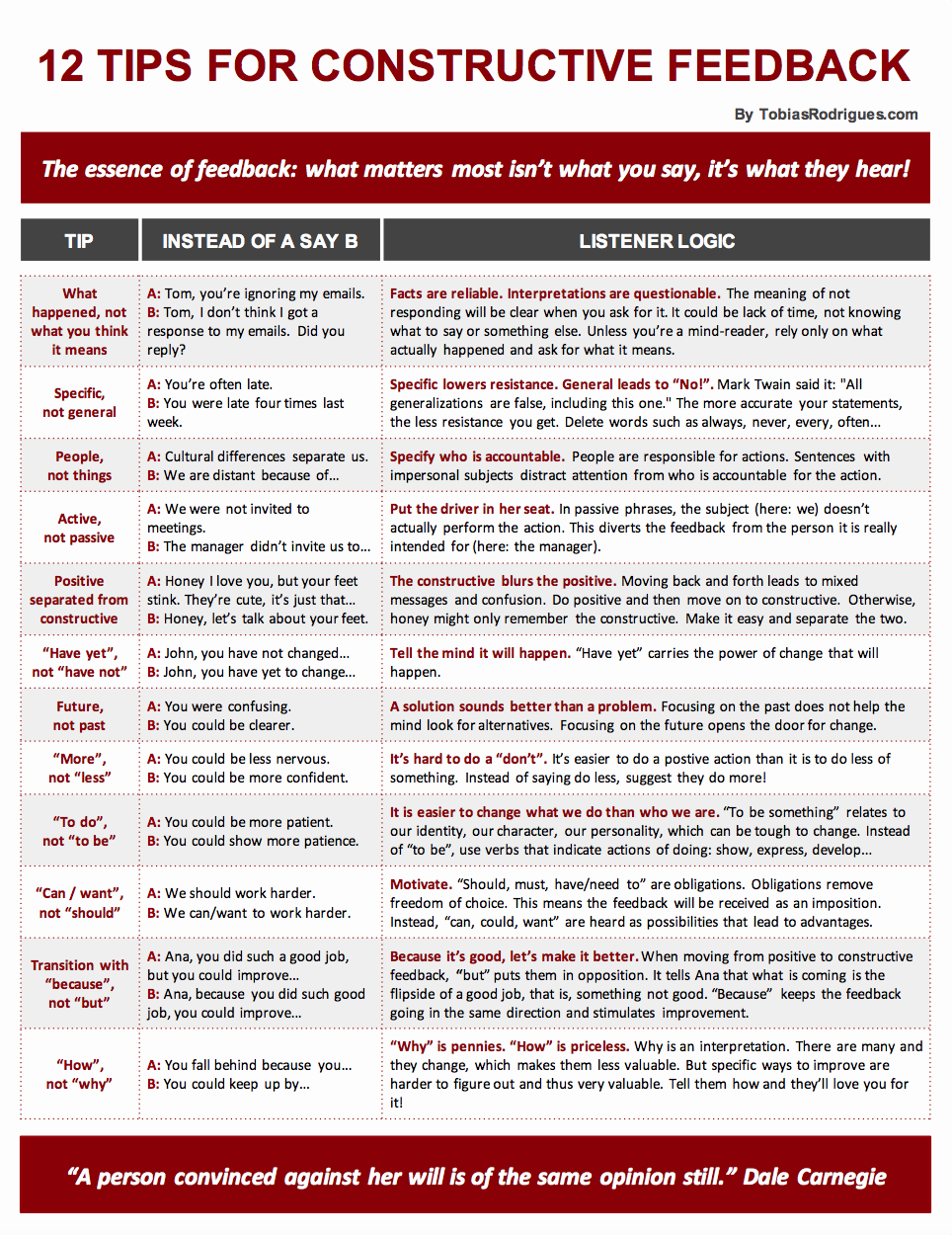Tag: Performance
12 Tips For Constructive Feedback
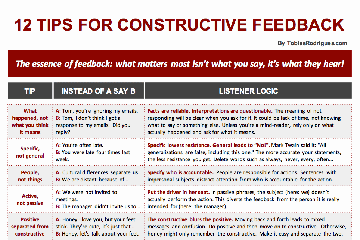
Whether a direct report, a manager, a colleague, a friend or a partner, giving constructive feedback is a crucial element of our relationships.
.
How you give feedback
determines how it is received.
I moderate constructive feedback sessions for teams and their leaders, and some patterns prove to be more effective than others. Here’s a set of keys that unlock the doors for constructive feedback to be well received.
Download and discuss them with those you give feedback to.
What matters most
isn’t what you say, it’s what they hear.
So by all means, I’d love to hear your constructive feedback.
How Odie Helps You Design Awesome Workshops!

The other day my friend and colleague Evgueni Talal, a specialist in customer satisfaction, asked for feedback on a workshop he’s preparing for the Toastmasters Fall District Conference in Lyon.
This got me thinking about what makes workshops awesome. I noticed four recurring elements that make workshops memorable experiences. Remember Odie from Garfield? These are the ODIE elements of awesome workshops.
- Original: How will the content be MINE?
When I began creating my conflict resolution seminars, I asked my friend and colleague, Florian Mueck, a public speaking and charismatic communication expert, for advice. Halfway through my first sentence, he said: “Stop! Don’t talk about someone else’s stuff. Present your own material.”
“Original” answers the question: What does the workshop offer that is uniquely mine that participants can get nowhere else? Evgueni has decided on something unique, to say the least. I won’t ruin the surprise, but be prepared to dance!!
This element avoids making the workshop merely a loudspeaker for other people’s material. Think about it: Why would someone want go to a workshop to listen to you talk about someone else’s ideas?
But how can we be original when some of the material is not ours? Only you own the experience of the content. Share your personal experience and add value by making connections we haven’t heard of. What does networking have to do with dancing? I have no idea. Ask Evgueni!!
- Doable: How will lives change?
The high applicability of the workshop to real life situations is crucial. “Doable” answers the questions: What will participants be capable of DOING when the workshop is over? What are the specific outcomes they can count on?
The answer to these questions begins with: By the end of the workshop participants will be able to do 1… 2… and 3… Once you’ve got the answers to this, design your workshop to make it happen.
What we avoid here are merely reflexive workshops that make us think about cool stuff but don’t equip us with the tools to change specific situations in our lives.
- Interactive: How will they share the stage?
Workshops where the participants are the stars are always successful workshops. The interactive element answers the question: What exercises and activities will I include to involve the participants?
What we avoid here are passive workshops, where participants receive but do not give. Awesome workshops invite participants to share their knowledge and skills. This is what makes it a workshop instead of a lecture or a speech.
- Entertaining: How will they be fully engaged?
No one wants to deliver boring workshops. But some people do. Inspiring others with our enthusiasm is the name of the game. It’s the greatest challenge we face.
Here are a few tips to make workshops more entertaining: tell stories, provide a form-like-handout with questions and blank slots to be filled throughout the workshop, and use examples that relate directly to your participants’ struggles.
Thank you Evgueni, for inspiring the topic for this post! Thank you Odie, for making the elements unforgettable: Original, Doable, Interactive and Entertaining!
No One Plans To Be An Idiot

Ever been in a situation where someone is slightly rude but in a polite way? Isn’t it annoying? The other day, a friend told me a member of the cleaning staff at work made an unpleasant “humorous” remark about how her files were “organized”.
“This made me realize that most of his remarks”, my friend explained, “aren’t really nice. In fact, they’re more like criticism disguised as humor.” Then she added:
“If I tell him to mind his own business, there’s a good chance I’ll come across as rude. If I start a conversation, I risk making too much of an issue – after all, I’m not his boss. But if I do nothing, things will continue as they are. What should I do?”
When we’re impolite or inconsiderate,
it’s out of weakness not strength.
“Where do you think this comes from”, I asked, “and why do you think he feels the need to say this kind of thing? Do you think he has something better to say and purposely changes it just to be critical?”
I went on to suggest that before she decided what to do, she might want to consider that negativity, like bad habits, has an acute ability to sneak unnoticed into everyday remarks. Unawareness of this accounts for some impoliteness.
On the other hand, I argued that genuine jerks are rare creatures and that pure stupidity is not the standard. No one plans to be an idiot. And on good days, most of us are not.
We tend to fall into the trap of disrespect
when we feel hopeless not hopeful.
Unpleasant remarks happen when we don’t know any better or when we’re having a bad day. When someone disrespects or provokes you, chances are they did it out of weakness, not out of the abundance of their strength.
I’m not saying you give them a break, I’m saying: Look at it from this angle. It places you in a position of greater power to decide how to influence the outcome of the situation.
My friend decided she’d give it some thought before acting. And it occurred to me we’d love to hear your suggestions: “What do you think she could do?”
A Lesson From Tough Times

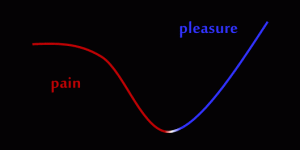
Think of someone who causes a sense of admiration when you recall the tough stuff they’ve been through and still managed to keep it together. How did they do it?
Lao Tzu said that the person who conquers others is strong while the person who conquers him/herself is mighty. How do you do that? Is there a formula?
It is precisely the extreme events of our life
that show us the essence of growth.
My personal experience of “intense” change includes moving unexpectedly at the age of 13 from Canada to a tiny Island of Portugal; losing quite a bit of weight (25 kg/55 lbs), and a career change.
More importantly, I’ve seen others go through much tougher events, such as an unjustly large jail sentence, the shaking news of a terminal illness, the untimely death of a son or the raw suicide of a sibling.
What does it take for us to change or overcome imposed change? In all these situations, I’ve noticed two defining forces that allow us to effect change or to overcome imposed change: pain and pleasure. I call them “The Curves of Change”.
The curves apply both to a desired change we wish to implement or an imposed change we wish to overcome.
Pleasure makes change desirable.
Pleasure is an attracting force: it pulls us to change. When faced with a situation to overcome, visualizing the pleasures that we will receive creates the desire to change.
For ex., when my family and I moved, the desire to make friends impelled me to quickly improve my Portuguese. When I lost weight, the idea of being slimmer made me want to exercise. When I changed career, the hope of more freedom fueled me to complete another master’s.
When we want to change, the first step is to visualize the pleasures that will be obtained as a result of changing. This provides the motivation to take action.
Pain makes change inevitable.
Pain is a repelling force: it pushes us to change. Pain is more effective than pleasure. Often there’s a taunting voice in our head: “It’s too hard. It’s not worth it. Not now.”
The efforts involved in changing can sway us to give up and settle for the way things are. The solution to reducing the pain involved in changing is to emphasize the pain involved in not changing!!
The solution to overcoming
great pain is a greater one.
For ex., when we moved, feeling ridiculous when I talked helped me overcome the challenges of an unfamiliar language. As I lost weight, the idea of feeling tired again drove me to stick to months of strict dieting. When the uncertainties of a new career made me doubt, the thought of another month doing the same thing pushed me forward.
The second step is to reduce the pain involved in changing by emphasizing the pains of not changing. This eases the feeling of discomfort involved in changing and gives us the stamina to endure.
Have no doubt, the road of change turns to lessen pain and curves to enhance pleasure. Be sure to look at it from this perspective. To successfully effect any change, engage in increasing pleasure and getting rid of pain!
What roles to pain and pleasure play in the curves of your change?
Grandpa Jose’s Effectiveness Recipe

My grandfather was born in the Azores Islands in 1906. His schooling literally lasted two days: the first and the day after. He got punished, didn’t like it, left and never went back.
Grandpa didn’t learn to read or write. Grandpa didn’t really know who Aristotle, Shakespeare or Karl Marx were. Grandpa didn’t rely on business trainings or performance enhancement models. Grandpa was a farmer.
One day, when he was but a young man, his dad gave him and his brother a gift: a pregnant young cow for the two to start their lives as herdsmen. Two years later, his brother owned two head of cattle; grandpa Jose, seven. From then on, his success kept multiplying, considerably.
This afforded him the opportunity to savor life, especially his passion for discovering the wonders of the world. In the end, grandpa grew to be quite the philosopher, readily armed with the precious pearls of common sense and practical wisdom.
The recipe of his effectiveness? He used say he remembered that often at the end of the day while he sat by the sunset reflecting, he’d notice his brother in the distance, still tilling the earth, persistently putting his back into every strike.
“Before the sun rose,” he used to say, “John would already be out on the field. And not before dark would he return! — All hard work and diligence. I did it differently. Every morning I’d ask myself: ‘What do I have planned for the day?’” Then he’d think:
How can I accomplish twice as much with half the effort?
Grandpa kept at it until he found an answer. Most of them eventually worked.
I gather an important lesson from my grandfather: To make it an undying habit to stop, rethink and improve. I’m sure he would be happy to know that Aristotle thought along similar lines: “We are what we repeatedly do. Excellence, therefore, is not an act but a habit.”
I must confess, though, I sometimes recognize a bit of great-uncle John in me. What about you: with whom do you most identify with?
Make It Touchable, Belarmino Said

“What motivates people?” – I was asked in a recent interview. The question reminds me of a story back when I worked in prisons. My colleagues and I had been asked to do a mini workshop with the inmates about identity and self-perception.
The key to motivation is to find the right reasons for someone to want to do something.
How on earth were we going to get prisoners engaged in a mandatory session on identity and perception?? I remember we were in the prison’s community area, brainstorming on how we could pull this off, when one of the senior guards said:
“Don’t sweat it. If they don’t want to do something, they won’t. And there’s nothing you can do about it.” His intention wasn’t to discourage us, rather to warn us not to get our hopes up high. It didn’t work – we did get our hopes up!
I remember us thinking: “Okay, so if what this man is saying is true, all we have to do is get the prisoners to want to do the workshop.” We realized that they would do anything we asked them to do, as long as we found a way for them to want to do it.
In fact, this became a guiding principle for our activities during the years we worked with inmates. And we did accomplished some cool stuff, such as plays, holiday parties, gastronomic events, even a meditation retreat!
If you want to motivate someone, make it touchable.
Appeal to their interests, not yours; their values, not yours.
On that particular occasion, we asked an actor friend, Belarmino, to help us. He suggested: “Let’s make it touchable”. So he asked the inmates to take turns in pairs in placing a sheet of tinfoil on each other’s face and to gently mold a mask.
Belarmino asked each one if they recognized themselves in the mask and contrasted their opinion with comments from the group. Et voilà! – thirty inmates having a philosophical conversation about self-perception and identity. Impressive!
We then formed a circle and passed a broomstick around. Everyone pretended it was a different object and the group guessed what it was. This way Belarmino conveyed the idea that when we change our actions, the way others perceive us also changes. Effective and fun!
To this day, when I think of motivation, I remember Belarmino: “Make it touchable!” To make people do things is not to motivate them. That’s to force them. To motivate is to find a way for them to want to do it. And if you can do that… they’ll do anything for you!
Do you know someone who could benefit from Belarmino’s inspiration? Share his story!
How Do You Get What You Want?
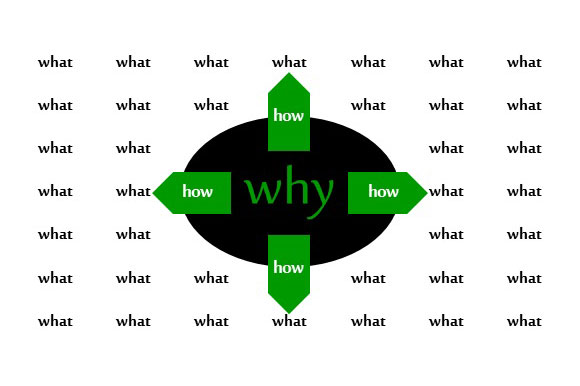
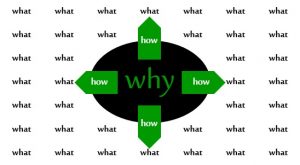
Has it ever happened to you to ask a waiter for something, who says “Sure, no prob”, and then he or she shows up with something different and then runs off, disappearing?
My father in law, Miguel, has a funny comeback for these situations. He got it from one of his law professors in university when he’d get answers to questions he did not ask.
Miguel says he sometimes feels like saying: “Now that you’ve brought me whatever you felt like, could you please bring me what I asked for!” However, I’ve never heard him use this line. I’m guessing he’s too much of an experienced gentleman to answer this way.
Crucial to effective communication and team performance is mastering the art of requests. We practice this in my seminars. The goal is to know what we want, why we want it and how we’ll get it.
With the diagram above, notice differences between needs, wants and requests:
Need = The Problem, Why: It’s a vital element to our wellbeing as humans. Thirst, tranquility and safety are examples. Notice that – physical, psychological or spiritual – we all tend to share similar needs. Here’s a list of common needs.
- Want = The Solution, What: It’s an answer to satisfying a particular need. If you’re thirsty you might want water; if you need some peace you could desire silence; if you need safety you might want a new door lock.
Our wants are the choices we make to respond to our needs.
Notice wants are one of many options. Instead of water you could want a soda; music instead of silence; a Rottweiler, not a lock. Unlike needs, wants are informed by our environment. For ex., the need for clothing can result in wanting the clothes informed by the fashion culture.
- Request = The Strategy, How: It’s the act of petitioning something from someone for the purpose of satisfying a want or a need. Ex: You could ask your partner for water, your colleague to turn down the music, or the landlord for a new lock.
Requests are strategies we use to satisfy our wants and needs.
Notice once again how a request is one of several strategies. You could have decided to get the water yourself, move to a quieter room, or change the lock on your own.
If we confuse the three, we end up requesting things we don’t want and wanting things we don’t need. We confuse problems (needs) with solutions (wants). We neglect the strategies (requests), forget the why (needs) and focus only on the solution (wants).
A tool for when we don’t get what we want: Ask yourself: What is the real problem (the need, why)? Are there other solutions (the wants, what) or better strategies (the requests, how)? Now adapt your wants and requests to meet your needs!
When a request is the best strategy, we want to trigger willingness from the receiver, not denial. We’ll discuss how to do this in following entries. Comments? Questions?
If Ever There’s A Purpose

Who am I? And why am I here? These are questions, specialists say, that assist us in the process of creating our identities. These questions have entertained a great part of my youth and adult life.
My quest to answer them, which somehow always seems to have a sequel, has been intense, exciting and at times unpredicted. Funny enough, meaningful results have come not by way of books or theories, rather by way of experiences and people.
The stories and relationships of life have helped me understand that:
For what matters, we get to choose who we want to be.
And a universal purpose, if there is one, might just be to be together.
If you live in those parts of the planet where August means vacation, you might be enjoying a few days of rest. Out here in sunny southern Spain, my wife and I enjoy the company of unique friends who dedicate themselves to a “universal” purpose.
For them, home is a distinct place called Murtra Galilea, a resort like compound for retreat and tranquility. The purpose you breathe here is rather palpable: kindness.
Here, it quickly becomes obvious that people were made to be kind, to extend warmth, to intensely enjoy the experience of being nice. It’s a wonderful feeling and I wanted to share it.
Kindness, if ever there’s a universal purpose!


